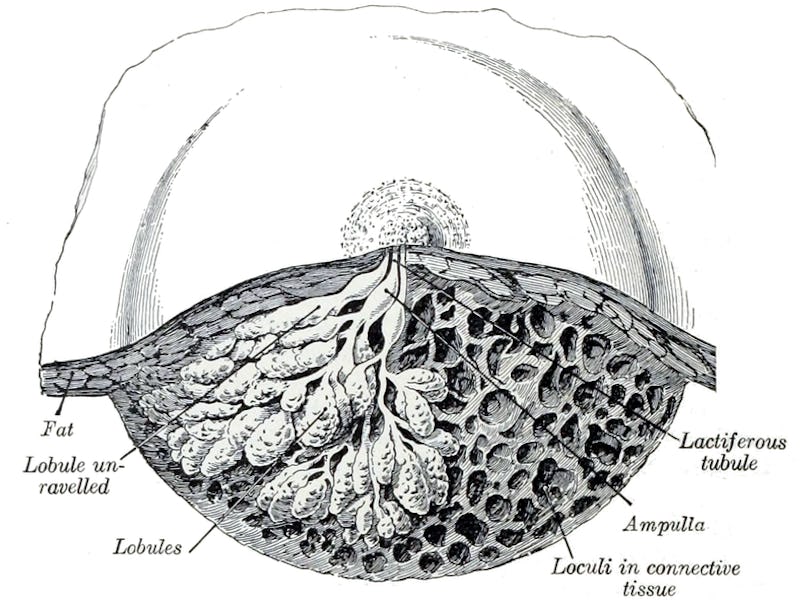German Researchers Make Tiny Boob-Like Organoid in Petri Dish
The little organ simulacrums that could improve cancer research.

For the first time, German researchers have created a 3D approximation of a mammary gland using human cells in a petri dish. The trick? A collagen gel, simulating the development of breasts in puberty. When scientists at the Helmholtz Center for Health and Environmental Research tweaked the rigidity of the gels, as they reported Friday in the journal Development, epithelial cells spread more quickly through the 3D faux boob.
The regenerative ability of mammary tissues, while not quite up to Wolverine’s level, are thought to be a normal function — a way that breasts maintain themselves while producing milk. On a harder collagen matrix, it’s a behavior that looks similar to how cancers spread, said Institute of Stem Cell Research PhD student Jelena Linnemann, an author of the study, in a press release. “Our results suggest that invasive growth in response to physical rigidity represents a normal process during mammary gland development that is exploited during tumor progression.”
An organoids like the one the German researchers have developed offer better ways to conduct cancer research. In a flat petri dish, cells behave differently than they do in normal organs. Tiny 3D creations are sprouting up in all corners of medical research. In 2013, Austrian molecular biologists grew mini brains — just 4 millimeters in size — out of self-organizing human stem cells.